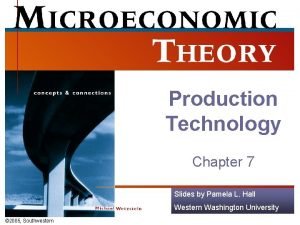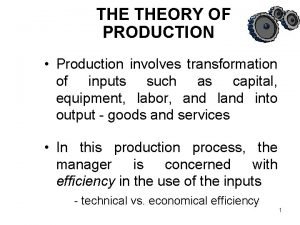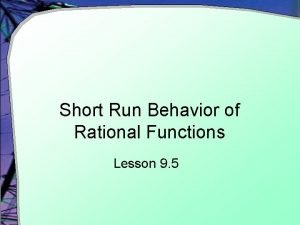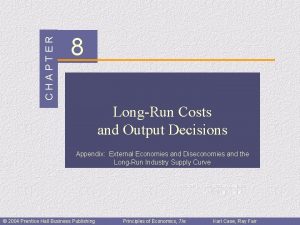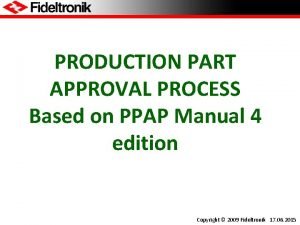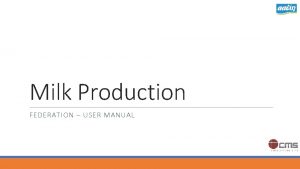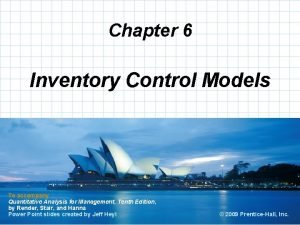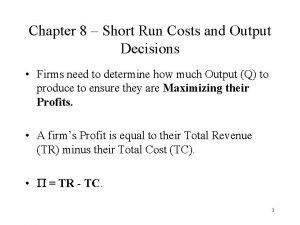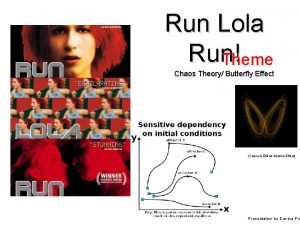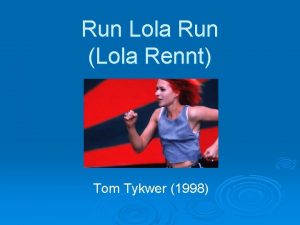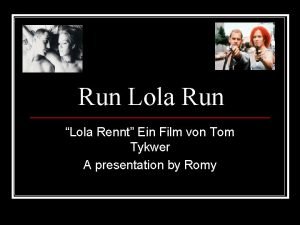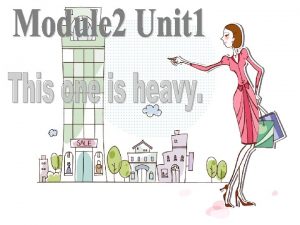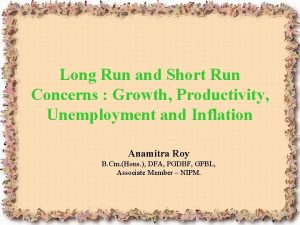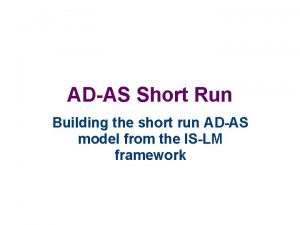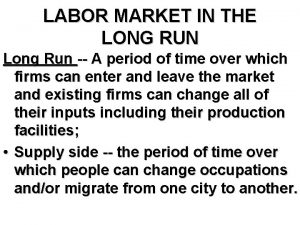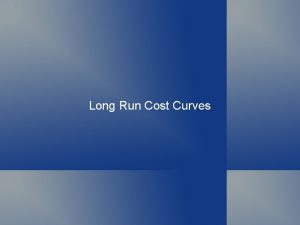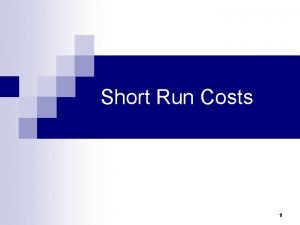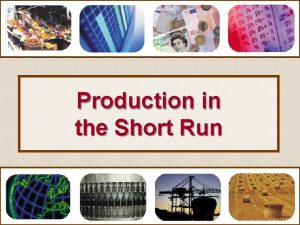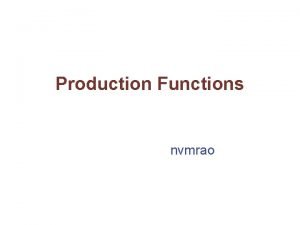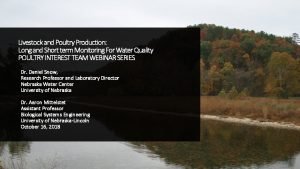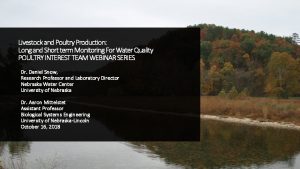Technology Production functions Short run and long run
























- Slides: 24

Technology Production functions Short run and long run Examples of technology Marginal product Technical rate of substitution Returns to scale

Analogies with Consumer Theory Consumers Firms Maximize utility Maximize profits Constraint: budget line Constraint: production function

Factors of Production Inputs: labor, land, capital, raw materials Physical capital: inputs that are themselves produced goods, such as tractors, buildings, computers, etc. Financial capital: money used to start up or run a business (not an input to production)

Production Function that describes the maximum amount of output that can be produced for a given level of inputs Inputs and outputs are measured in flow units. E. g. , with labor, L, and capital, K, as inputs:

Technology, Flexibility, and Returns to Scale Input Flexibility How flexible is a firm’s technology? To obtain a particular output is it possible to substitute one input for another? At what rate? Changing Scale of Operations If a firm doubles all inputs, what happens to output? Returns to scale.

Short Run and Long Run Short run: some factors of production are fixed at predetermined levels. Example: in short run, a firm cannot easily vary the size of a plant. It can use machines more intensively. E. g. :

Short Run and Long Run Long run: all factors of production can be varied. No fixed factors. How long is the long run? It depends on the specific type of production. For automobile manufacturer it can take years to change size of plant. For travel agency months.

Fixed Proportions:

Perfect Substitutes:

Cobb-Douglas Production function: Isoquants:

The Marginal Product Consider a firm using inputs Q: by how much is output going to increase if the firm uses “a bit” more of input 1, while keeping input 2 fixed? A: Marginal product of factor 1:

The Marginal Product Typical assumption in economics: the marginal product of a factor decreases as we use more and more of that factor E. g. : nurses producing radiographies using given machine

The Marginal Product: Cobb. Douglas Consider Cobb-Douglas production function in K and L: Marginal product of capital: Marginal product of labor:

Technical Rate of Substitution TRS is the slope of an isoquant at a given point X Measures the rate at which the firm has to substitute one input for another to keep output constant

Computing the TRS Q: What is the slope of an isoquant (TRS)? A:

Computing the TRS: Cobb. Douglas Cobb-Douglas case:

Returns to Scale Q: What happens to output when you double the amount of all the inputs? A 1: If output doubles, the technology exhibits constant returns to scale. E. g. : travel agency that uses office space and travel agents as inputs.

Increasing Returns to Scale A 2: If output more than doubles, the technology exhibits increasing returns to scale. E. g. : oil pipeline. Double diameter and quadruple crosssection of the pipe.

Increasing Returns to Scale If there are increasing returns, it is economically advantageous for a large firm to produce, rather than many small firms. Issue of monopoly.

Returns to Scale A 3: If output less than doubles, the technology exhibits decreasing returns to scale. Applies to firms with large-scale operations where it is more difficult to coordinate tasks and maintain communication between managers and workers.

Cobb-Douglas and Returns to Scale Cobb-Douglas: Scale inputs by a factor :

Cobb-Douglas and Returns to Scale inputs by a factor : If : , then

Cobb-Douglas and Returns to Scale inputs by a factor : If : , then

Cobb-Douglas and Returns to Scale inputs by a factor : If : , then
 Tall+short h
Tall+short h Long run perfect competition equilibrium
Long run perfect competition equilibrium What is a short run supply curve
What is a short run supply curve Short run vs long run economics
Short run vs long run economics Post produksi adalah
Post produksi adalah Three stages of short run production function
Three stages of short run production function The act of production involves transformation of
The act of production involves transformation of Once upon a time,there
Once upon a time,there Short run behavior
Short run behavior Multirule plus
Multirule plus Long run cost and output decisions
Long run cost and output decisions Ppap levels
Ppap levels Production run
Production run Production run
Production run Short run cost and output decisions
Short run cost and output decisions Run lola run theme
Run lola run theme Run lola run editing techniques
Run lola run editing techniques Lola brigitta
Lola brigitta Nn lolas
Nn lolas Poem about tinikling
Poem about tinikling Long long ago when the gods and goddesses
Long long ago when the gods and goddesses Short division vs long division
Short division vs long division What is a semiconductor used for
What is a semiconductor used for Long term plan and short term plan
Long term plan and short term plan Long case and short case
Long case and short case





